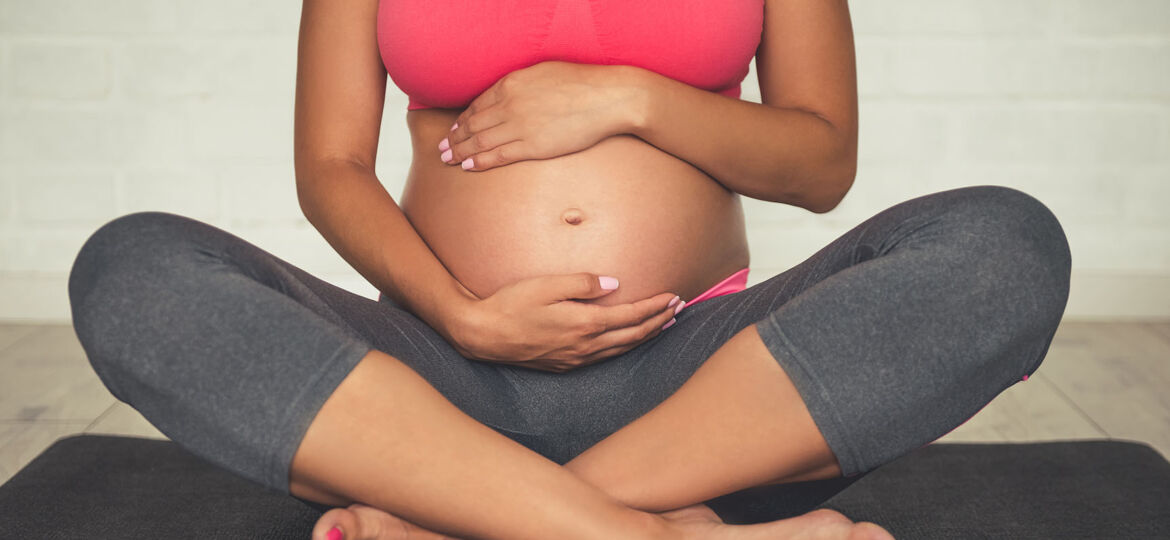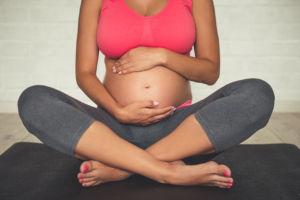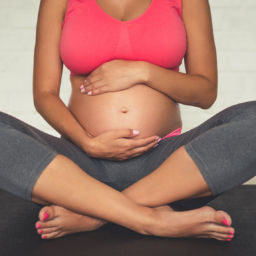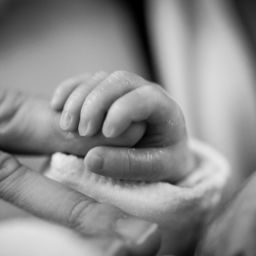
Conception & the 1st Trimester

The early conceptus is beginning to implant and the cells that will become the placenta are sending hormonal signals to the body that pregnancy has begun. The most dramatic change is the ending of the menstrual cycle. The mother’s blood volume is beginning to expand by the 8th week of pregnancy in order to support the placenta.
The uterus starts to undergo dramatic changes in size, shape, and tissue volume. While pre-pregnancy, it was a pear-shaped organ weighing just a few ounces, it is undergoing growth such that it will eventually weigh about two pounds. Simple, toning contractions that are usually painless begin to occur.
By the end of the first trimester, the uterus has enlarged to the point that we can feel the fundus just above the pubic bone. The growing uterus can trigger sharp, crampy pains from round ligament stretching. Unfortunately, these pains can show up any time through the remainder of your pregnancy.
Common Discomforts of the First Trimester:
- Morning sickness
- Eat small, regular meals. Keep snacks available to avoid hypoglycemia. Avoid lying down after eating.
- Ginger capsules
- Vitamin B6
- Mint or other Tummy teas
- Focus on excellent nutrition; protein
- Ask about my more detailed handout on morning sickness suggestions
- Breast Changes
- Go braless when possible and/or wear comfortable bras when necessary
- Make sure that any bra you wear is supportive of your breasts
- A hot soak in the tub can help to relieve discomfort
- Massage with herbal oil
- Urinary frequency
- Unfortunately, there’s not a lot to do about this annoyance! Try to avoid drinking excess fluids before bed so that you at least can minimize the number of night wakings.
- Continue to urinate when you have the urge. We don’t want to hold back urine and end up with a urinary tract infection.
- This should ease up as the first trimester comes to a close and the uterus begins to lift off the bladder (but will probably return in the third trimester).
- Mood swings and concerns about being pregnant
- It is normal to feel some ambivalence about being pregnant, even if this is what was desired! Take time to care for yourself, journal about your feelings, and talk to trusted family members/friends. Mental health therapists can also be a wonderful resource to sort through these complicated feelings if they seem to linger or are causing difficulty with other areas of your life.
- Fatigue
- Although fatigue can be a normal part of your body’s adaptation to being pregnant, it can be quite frustrating! Make sure to aim for a full night of sleep (8 hours), and rest during the day as needed.
- Get help with other children; at least rest when they are resting or otherwise occupied.
- Focus on excellent nutrition, b-vitamins, getting enough protein, iron-rich foods.
- This should ease up as the first trimester draws to a close and your blood volume has expanded significantly.
- Drink a pregnancy tea with Nettles to help nourish the adrenals, improve nutrient intake, and build mineral levels
- Round Ligament Pain
- Change positions slowly, and try moving with your legs together
- Develop a prenatal yoga and/or stretching practice
- Especially helpful poses are cat cow pose, an exaggerated child’s pose where you keep your bum high up in the air, and doing pelvic tilts.
- Look into the Body Ready Method prenatal exercise program
2nd Trimester

The uterus is becoming even larger and you will begin feeling fetal movement, especially by 20 weeks. Weight gain and continued uterine enlargement may lead to problems such as hemorrhoids. There is often a 5-10 pound weight gain that happens between 24-28 weeks that is indicative of blood volume expansion. Blood volume will continue to increase as the placenta is well established and will provide all of the needs for the fetus.
Painless toning contractions are more noticeable in the second trimester and are a sign that your body is preparing for birth and will help prepare the cervix for labor.
By 18-20 weeks, the uterus should be above the pubic bone and often the uterine height correlates with the number of weeks you are pregnant.
Overall, the second trimester is usually a time of “smooth sailing” where you feel good, baby is growing and starting to be felt by you, and your primary job should be to stay well-nourished and take good care of yourself.
Common Discomforts of the Second Trimester:
- Hemorrhoids
- Daily exercise, especially pelvic tilting and dancing
- Witch hazel
- Sitz baths/epsom salts
- Spend 20 minutes a day with feet elevated higher than your heart
- Eat plenty of dark, leafy greens
- Vitamin C-rich foods and a possible supplement of 1000 mg vitamin C a day
- Changes in the digestive system can also lead to constipation.
- Make sure to get a brisk walk or another form of exercise each day
- Try using a squatty potty
- Eat a lot of high fiber vegetables and cut back on meat, cheeses, and high fat foods.
- Drink plenty of water
- Try using magnesium citrate at a dose of 300-800 mg (*ask your provider before use; may not be right for those with dehydration or kidney issues)
- Yellow dock tincture
- Heartburn tea
- Change your prenatal vitamin
- Heartburn
- Avoid spicy, oily, and fatty foods
- Eat small, frequent meals rather than sparse large ones
- Avoid lying down right after eating
- Slippery elm lozenges
- Papaya enzymes
3rd Trimester

Blood volume is continuing to expand and the baby is growing so much that it is easier and easier to feel during an exam. Blood volume expansion peaks around 30 weeks and this will make sure that there is optimal fetal growth in these last weeks of pregnancy.
Ideally, the baby will be vertex by the 33rd week. If not, there are various options to try to “flip” the baby that can be discussed.
First-time mothers and some who have birthed before may experience a dropping sensation as the baby settles down into the pelvis – this is often called “lightening”. This dropping frees up room in the abdominal cavity relieving pressure on the intestines, stomach, and diaphragm. However, more pressure may be felt on the rectum and bladder, leading to an increased frequency of urination again.
Muscle and ligament softening is accelerating in this last trimester and the uterus becomes increasingly active, all thanks to increased prostaglandins and other hormones This additional relaxation can make walking more difficult and put pressure on the pelvic nerves. This may cause cramping, groin pain, and persistent lower backache.
The continuation of mild uterine contractions is still helping to prepare the cervix for labor and these changes can lead to shooting pains and achiness from the cervix or lower uterus. As labor approaches, the toning contractions will become stronger, more regular, and eventually will not stop and therefore progress into labor.
Common Discomforts of the Third Trimester:
- General discomfort as baby gets bigger, especially with downward pressure
- Smaller, more frequent meals can help
- Prenatal yoga and stretching
- Practice good posture
- Sit on a birth ball
- Cramping, groin pain, and lower backaches
- Epsom salt baths
- Make sure to stay hydrated
- Continue doing gentle exercises
- Be aware of good posture
- Take a walk every day and do gentle leg lifts and lunges
- Make sure to get enough minerals in your diet or with supplements
References
Holistic Midwifery Volume 1 by Anne Frye
The Natural Pregnancy Book by Aviva Romm
Olds’ Maternal-Newborn Nursing & Women’s Health Across the Lifespan






